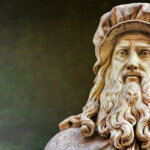Gondwana (also known as “Gondwanaland”) was a supercontinent that split into what is now Africa, South America, Australia, the Arabian Peninsula, Antarctica, and the Indian subcontinent about 180 million years ago.
The familiar continents of today are merely a blip in a long history of continental movement. Lands on Earth constantly move in slow motion and have come together multiple times. Columbia (also known as Nuna), Rodinia, Pannotia, and Pangaea are examples of all-in-one supercontinents (or Pangea).
Gondwana was a quarter of the Pangaea supercontinent alongside Laurasia, a northern supercontinent.
Gondwana is believed to have formed around 510 billion years ago in a long process involving various tectonic events, implying that it lasted a very long time. The formation of Gondwana took a long time. Several orogenies (mountain formation and tectonic events) ended up leading to its final amalgamation in the Cambrian 550-500 million years ago. The Brasiliano Orogen, the East African Orogen, and the Kuungan Orogen are among them.
The final stages of Gondwana’s formation coincided with the formation of the Iapetus Sea between western Gondwana and Laurentia. The Cambrian explosion occurred during this time period.
During the “Carboniferous period,” Gondwana collided with other large land masses. Pangaea (the supercontinent composed of Gondwana, Baltica, Laurentia, and Siberia) was formed when Gondwana came into contact with these other land masses. Pangaea eventually broke up, initiating in the Triassic period and lasting until the Jurassic period. This was when Gondwana and Laurasia formed, but Gondwana was not the same as it was before Pangaea was formed.
The final formation of Gondwana occurred around 600 million years ago during the late Ediacaran period. Multicellular organisms had morphed by this time, but they were primitive. Level rise and regression over the period would have resulted in land bridges connecting the southern hemisphere continents. The few fossils that have survived this time show segmented worms, frond-like organisms, and round creatures resembling modern jellyfish.
Although the Cretaceous-Paleogene extinction event (about 65 million years ago, believed to have been prompted by the impact of a massive comet or asteroid) wiped out 34 of Earth’s plant and animal species, plant development was barely affected in Gondwana.
The Australian continent even now moves northward at a rate of about 1.2 inches per year. The Laurel Forests, which can be found in parts of Australia, New Caledonia, and New Zealand, contain many species that are related to Antarctic flora and still contain plants that originated in Gondwana. Gondwana had a lush, pleasant, tropical climate, close to today’s tropical rainforest climate.
Multicellular organisms had primitively evolved by the time Gondwana’s final formation occurred. Fossil records of creatures and segments of insects that look similar to modern-day plants and animals were discovered.
Dinosaurs roamed Gondwana for millions of years, eating and living in lush plants and forests. A great deal of the bio-diversity that existed in Gondwana can still be seen today, especially in places like New Zealand and Australia, where many of these lifeforms are endemic.
The Megalania, which means great roamer was the world’s largest land lizard; it was a poisonous carnivore. Only 20 per cent of the total of its skeletal structure has been found so far; it lived in Australia. The herbivorous Leaellynasaura was a tiny dinosaur with a long, skinny tail and excellent vision. The plant family Proteaceae is found on all of the continents of the Southern Hemisphere, indicating a “Gondwanan distribution.” Many extinct primitive plants that did grow in Gondwana included giant club mosses, progymnosperms, and Archaeopteris, the first large tree to be seen.
During the Mesozoic period, the recently created Gondwana began to disintegrate once more; this time, East Gondwana (which included Antarctica, Madagascar, India, and Australia) started to separate from Africa.
During the opening of the South Atlantic Ocean, South America began slowly drifting westward from Africa. In the meantime, in Eastern Gondwana, Madagascar broke away from India and separated from Australia and Antarctica. The breakup of Eastern Gondwana is thought to have wiped out nearly half of all species (mostly dinosaurs) 65 million years ago. Some scientists believe that volcanic and tectonic activity played a role in the breakup of Gondwana. During the Cenozoic period, Australia and New Guinea began to separate and rotate north; at the same time, India began to separate and rotate north.
Plate clashed with Asia, resulting in the Himalayas. Suess derived the name Gondwanaland from the Gondwana region in central India, where geological formations fit those found in the southern hemisphere at similar ages.
The precise mechanisms that caused Gondwana to split are also still unknown. Some theories suggest that “hot spots” of magma near the surface erupted and rifted the supercontinent off from each other.
However, in 2008, University of London researchers proposed that Gondwana split into two tectonic plates, further separated.
Eduard Suess, a Viennese geologist who dubbed the hypothetical continent “Gondwanaland,” proposed the existence of Gondwana in the mid-1800s.
Suess was tipped off by fern fossils discovered in South America, India, and Africa (the same fossils would later be found in Antarctica).
Suess did not realize that each of these continents once existed in different locations because plate tectonics was not understood at the time. Instead, he devised a set theory.
Alexander Du Toit, a South African geologist, expanded on the concept of Gondwana in his 1937 book Our Wandering Continents. Du Toit meticulously documented the innumerable geologic and paleontological evidence lines that connected the southern continents.
This evidence included the presence of Permo-Carboniferous (roughly 290 million years old) glacial deposits known as tillites, as well as floras and faunas not found in the Northern Hemisphere.
However, the concept of Gondwana was commonly acknowledged by Southern Hemisphere scientists. Northern Hemisphere scientists resisted the notion of continental movement until the 1960s, when plate tectonics theory demonstrated that ocean basins really are not permanent global features.
Gondwana is proof that Earth was once a giant continent and the numerous evolution that has taken place since.























Leave a Reply